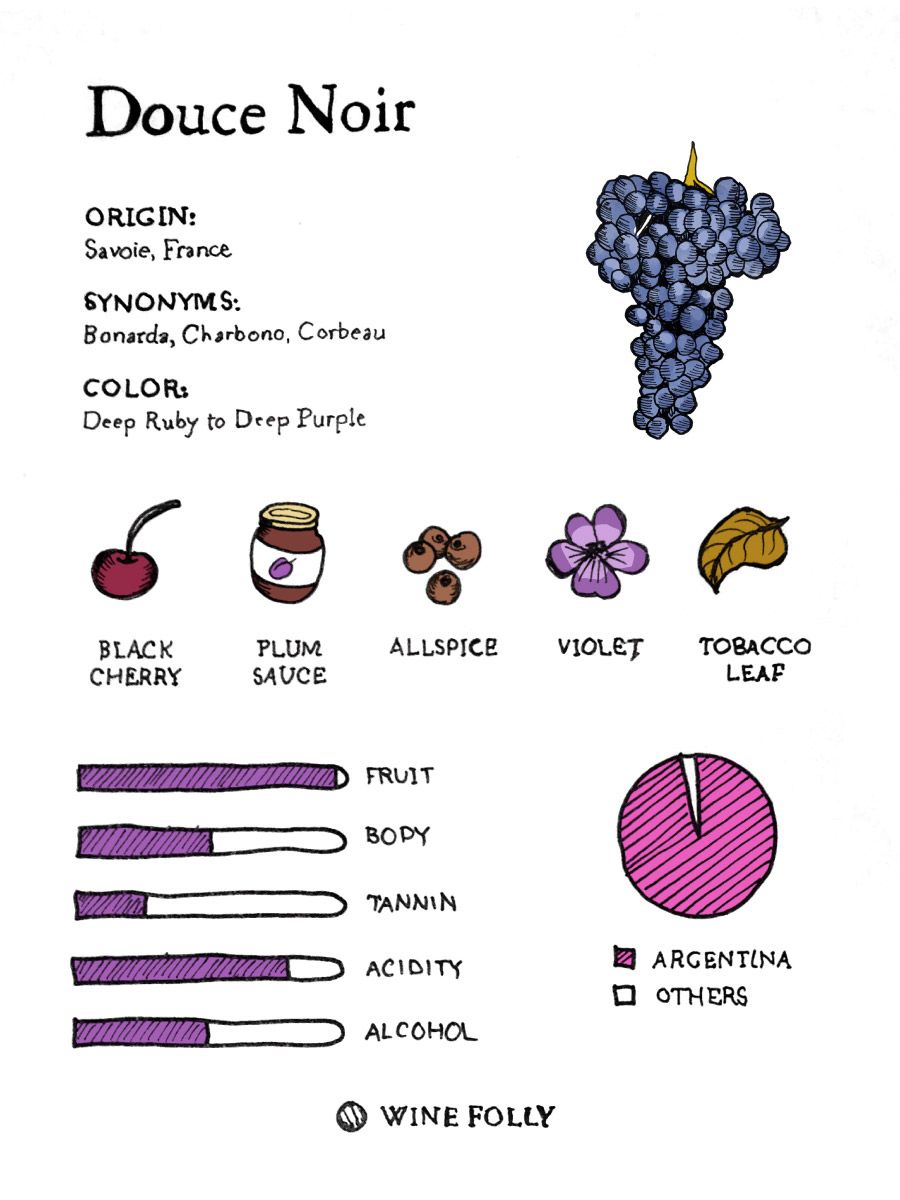Bonarda, it’s here!
Today we opened up a bottle of Santa Julia wine, a mix of Malbec and Bonarda. The first time I heard about Bonarda was a few years ago, while visiting the Mendoza area of Argentina. The hush hush was that winegrowers were planting the Bonarda grape in great quantities. We should be on the look out in the future for Argentina Bonarda. It will become Argentina’s next red.
 Argentine Bonarda
Argentine Bonarda
Apparently, Argentine Bonarda isn’t the same as Italian Bonarda. The Argentine grape is different: Douce Noir, similar to a grape from the Savoie in France. Some argue it comes from California’s Charbono.
Bonarda wines are at first very fruity on the nose, with notes of black cherry compote, fresh blueberry, and plum. Then, they become more complex, giving off nuanced aromas of violets, 5-spice, allspice, and peonies. Finally, depending on whether or not the wine was oaked (though most aren’t), they may have slight smoky notes of cigar box, sweet figs, and chocolate. On the palate, Bonarda has an initial burst of fruitiness, a medium-body, juicy acidity, and a smooth, low-tannin finish.
I expect a lot more Bonarda to show up now. If there only was a way to invest in the Argentina’s next red.
The Santa Julia wine tasted great for a Friday-pondering-election-results.